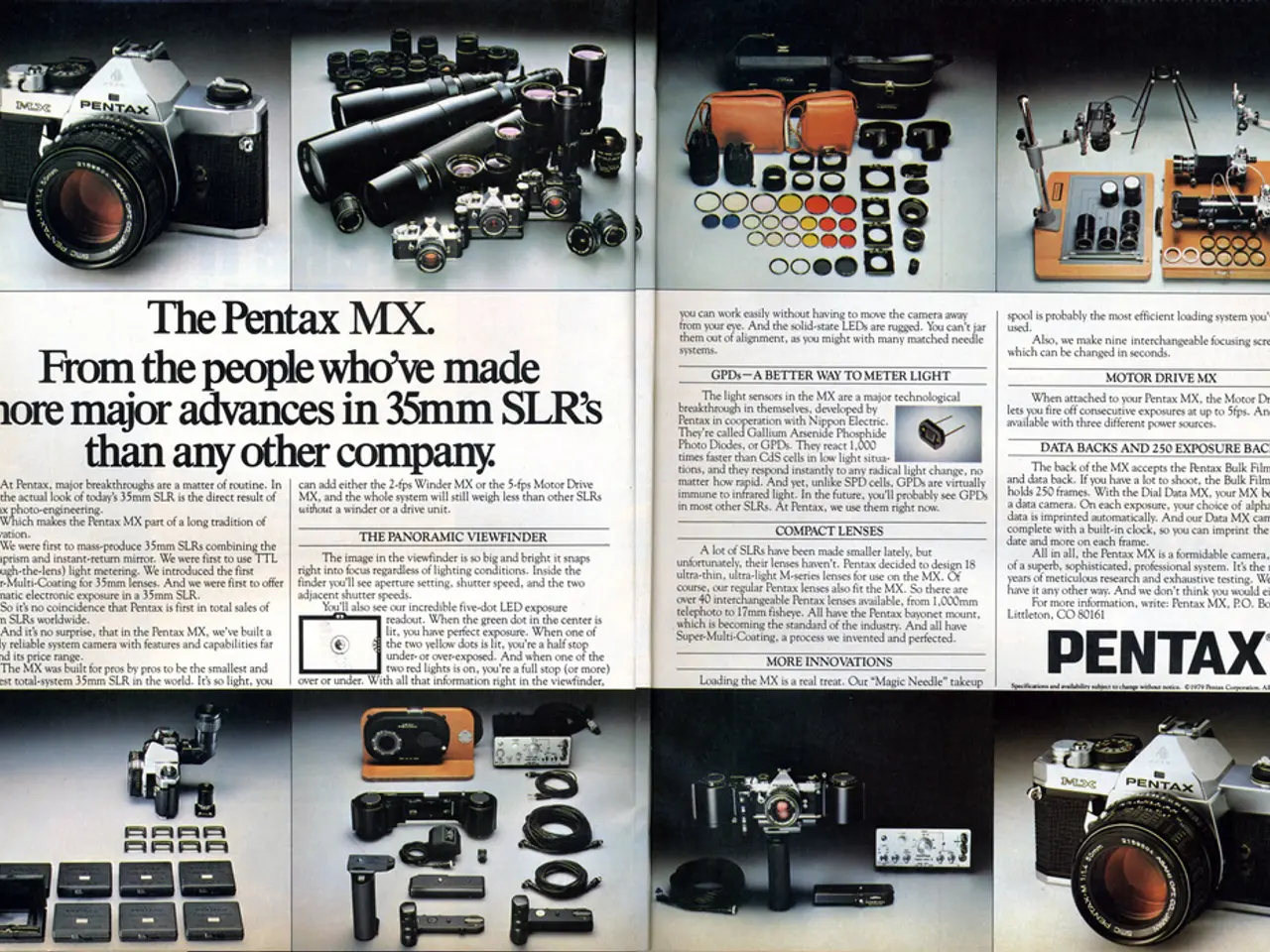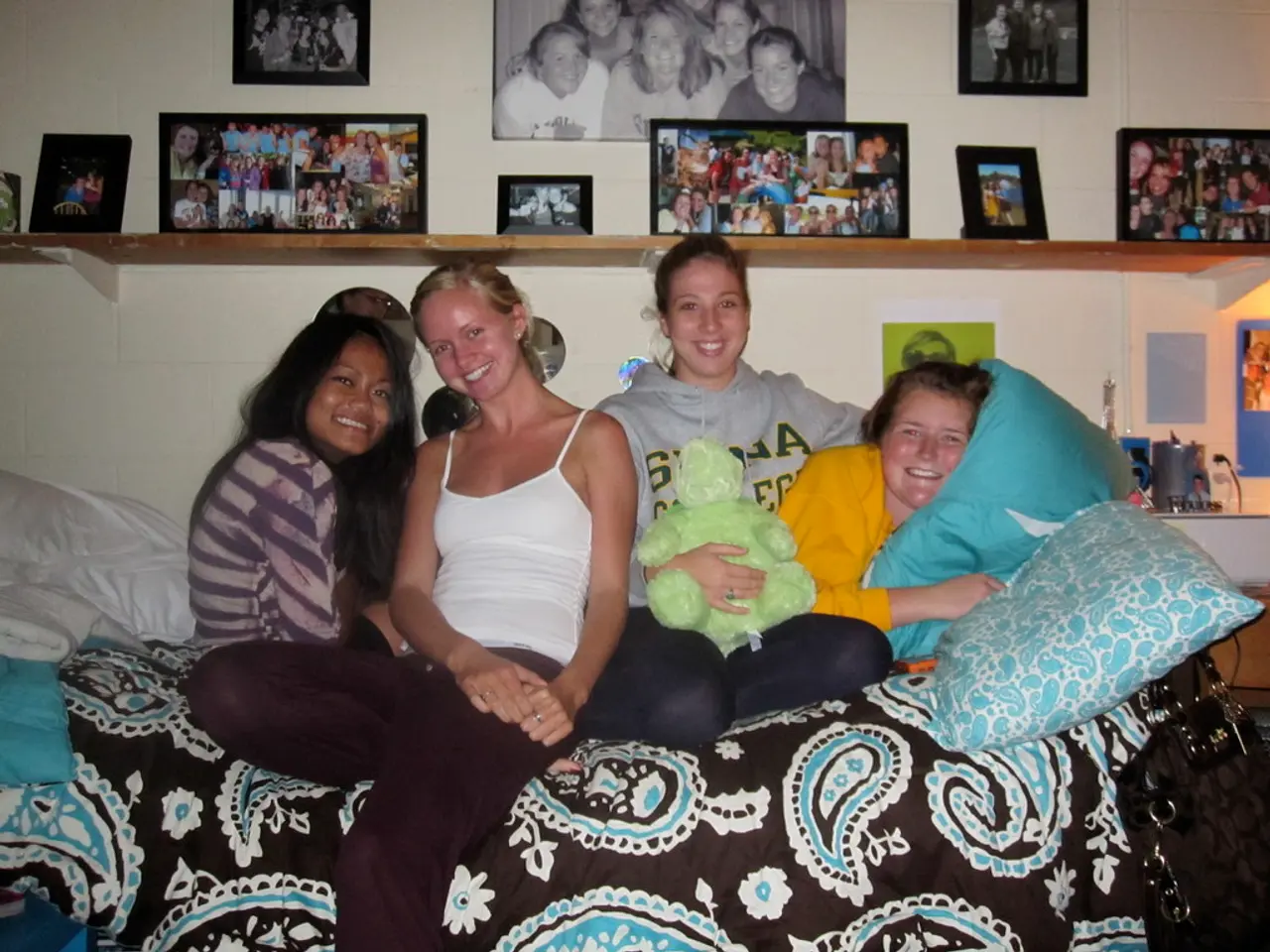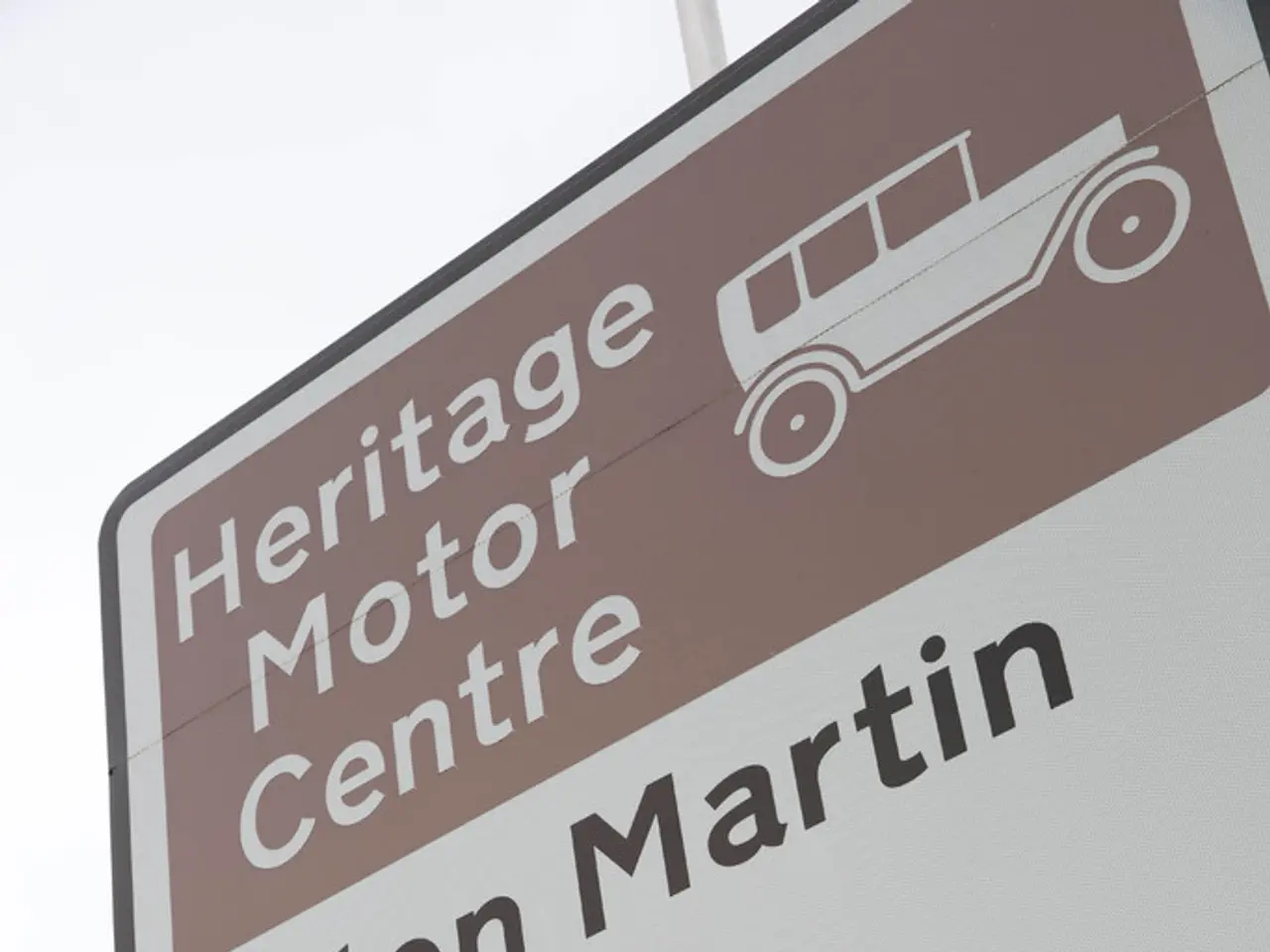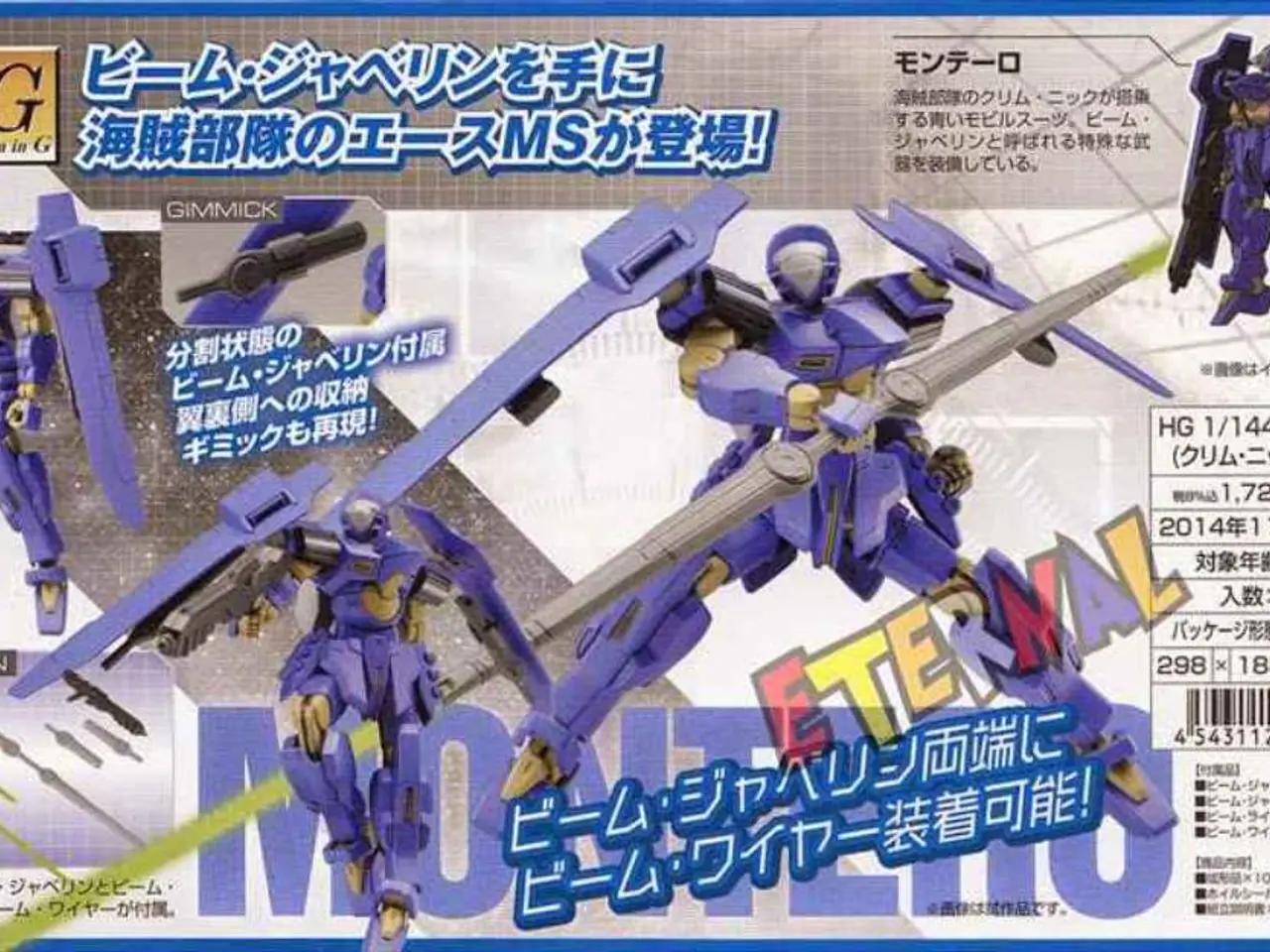"Advertisement: Strategies for Introducing Film-Quality Visual Effects to Local Television News Broadcasts"
=====================================================================================
In the world of broadcasting, local TV stations are now able to incorporate cinematic camera moves into their newscasts, thanks to the affordable and cost-effective technology provided by MRMC (Mark Roberts Motion Control).
MRMC, a company with a rich history dating back to 1966, has been at the forefront of motion control camera technology, initially for the film industry. Today, they continue to push boundaries with their latest offerings, such as the MRMC StudioBot multi-axis robotic arm.
The StudioBot, mounted on a track-mounted robotic arm or a robotic pedestal, can follow anchors or reporters walking around a news set and move smoothly around AR graphics. This technology provides dynamic and complex camera angles and motions, including smooth pans, tilts, tracking shots, and speed ramping synchronized with audio cues.
This enhancement of visual storytelling and production value is made possible by the precision, programmability, and repeatability offered by these robotic systems. They allow local TV stations to incorporate creative and engaging camera moves that were previously cost- or space-prohibitive.
MRMC's cost-effective solutions for local TV stations include compact and scalable models like the StudioBot LT, designed for smaller spaces and lower budgets. The automation and repeatability of these systems also help reduce the need for highly skilled camera operators, lowering personnel costs and simplifying operation.
Moreover, MRMC's product line offers versatile options like the StudioBot LT and Cinebot range, which can be integrated with standard broadcast cameras and control systems, minimising the need for costly infrastructure changes.
MRMC actively showcases these solutions at industry events like IBC, providing local stations with hands-on experiences and demonstrations to facilitate informed purchasing decisions.
The technology required to add cinematic camera moves to local news also includes AI-powered talent tracking, collision-avoidance LiDAR scanning, and MOS-compliant production automation software.
The freedom of movement offered by robotic arms and their seamless integration into virtual sets and AR graphics can engage viewers more deeply in stories. This, combined with the cost-effectiveness and scalability of these solutions, makes them an attractive proposition for local TV stations.
It's important to note that adding MRMC robotic solutions to newscasts isn't an all-or-nothing proposition and can be done incrementally. Both robotic pedestals and robotic arms share characteristics such as precision, repeatability, and reduced dependence on skilled workers.
MRMC's technology has even been used in outer space by SpaceX and Boeing for automated docking with the International Space Station. This demonstrates the versatility and robustness of MRMC's robotic solutions.
In 2017, Nikon acquired MRMC, further solidifying their position as a leading provider of camera robotics systems built on intelligent automation for virtual production and remote acquisition. MRMC Broadcast continues to deliver solutions aligned with emerging trends to enable greater flexibility, scalability, and creative freedom across studios, live productions, and hybrid environments.
In conclusion, MRMC's multi-axis robotic arms are transforming local newscasts by offering precise, programmable automation and compact, scalable robotic solutions designed to fit local constraints and budgets. This technology not only enhances the visual storytelling and production value of local newscasts but also engages viewers more deeply in stories.
[1] MRMC. (n.d.). MRMC StudioBot. Retrieved from https://www.mrmc.co.uk/products/studiobot/
[3] MRMC. (n.d.). MRMC StudioBot LT. Retrieved from https://www.mrmc.co.uk/products/studiobot-lt/
[4] MRMC. (n.d.). MRMC Robotics for News. Retrieved from https://www.mrmc.co.uk/industries/broadcast/news/
- In the realm of broadcasting, MRMC's multi-axis robotic arms are revolutionizing local newscasts with precise, programmable automation and compact, scalable solutions.
- The affordability and cost-effectiveness of digital technology from MRMC allows local TV stations to incorporate cinematic camera moves into their newscasts.
- MRMC's StudioBot, a robotic arm or pedestal-mounted device, follows anchors and reporters, providing dynamic and complex camera angles on a news set.
- The integration of MRMC's technology, such as the StudioBot and StudioBot LT, with standard broadcast cameras and control systems reduces the need for costly infrastructure changes.
- AI-powered talent tracking, collision-avoidance LiDAR scanning, and MOS-compliant production automation software are essential components for incorporating cinematic camera moves into local news.
- MRMC's versatile gadgets offer seamless integration into virtual sets and AR graphics, engaging viewers more deeply in stories.
- The technology used in local news also includes live production systems, media workflows, and IP studio setups, demonstrating the versatility of MRMC's solutions.




